The Amazing Engineering Story of the Microwave Oven
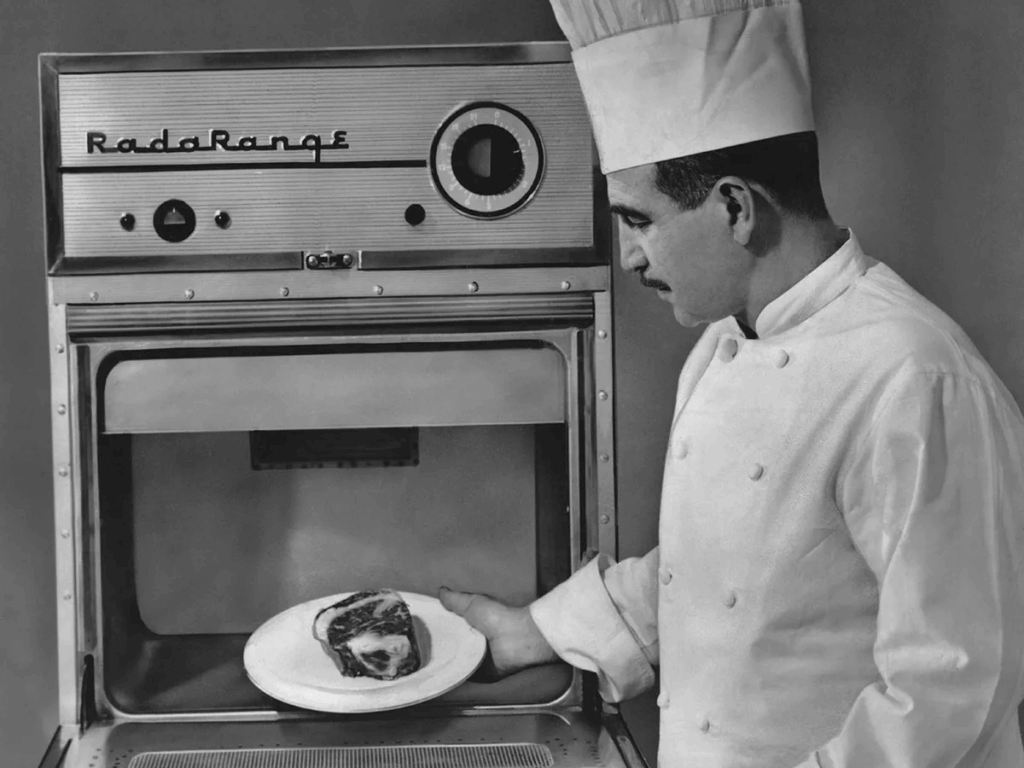
Microwaves are in almost every kitchen today, making cooking faster and easier. But did you know this everyday appliance started as a military invention? It all began with radar technology used in World War II, until one curious engineer realized it could also heat food. What started as a surprising discovery soon became one of the biggest kitchen breakthroughs in history. Let’s dive into the amazing story of how the microwave went from battlefield tech to a must-have in homes around the world.
The Accidental Discovery: When a Chocolate Bar Changed History
The 1940s were a time of rapid technological advancement, driven by the urgency of World War II. Radar, used to detect enemy aircraft and ships, was one of the most crucial innovations, and Percy Spencer played a key role in refining it.
By 1939, Spencer had become one of the world’s leading experts in radar tube design. Working at Raytheon, a major U.S. Department of Defense contractor, he served as chief of the power tube division, revolutionizing magnetron production. His improvements increased manufacturing efficiency, boosting output from 100 to 2,600 magnetrons per day, a crucial contribution to wartime efforts.
At the heart of radar technology was the magnetron, a high-powered vacuum tube that generated radio waves. Originally developed for military applications, magnetrons were essential for radar systems, allowing Allied forces to detect enemy aircraft and ships with unprecedented accuracy.

Spencer’s expertise in magnetron design helped Raytheon secure a government contract to develop and produce combat radar equipment for MIT’s Radiation Laboratory. This initiative became the second-highest priority military project of World War II, surpassed only by the Manhattan Project.
Then, in 1945, an ordinary workday took an unexpected turn. As Spencer stood near an active magnetron, he felt something unusual, his pocketed chocolate bar had melted into a gooey mess. Instead of brushing it off as a nuisance, his engineering instincts kicked in. Had the radio waves caused this reaction?
Fueled by curiosity, Spencer began experimenting. He placed popcorn kernels near the magnetron and watched them dance and pop, becoming the first food intentionally cooked using microwave technology. His next test, an egg, ended explosively, teaching a lesson still relevant today: containment matters when using microwaves!
These simple but groundbreaking tests confirmed his realization, microwaves could rapidly heat food, sparking an innovation that would extend far beyond military applications. Spencer’s accidental discovery was the beginning of a kitchen revolution.
The Self-Made Engineer: Percy Spencer’s Remarkable Journey
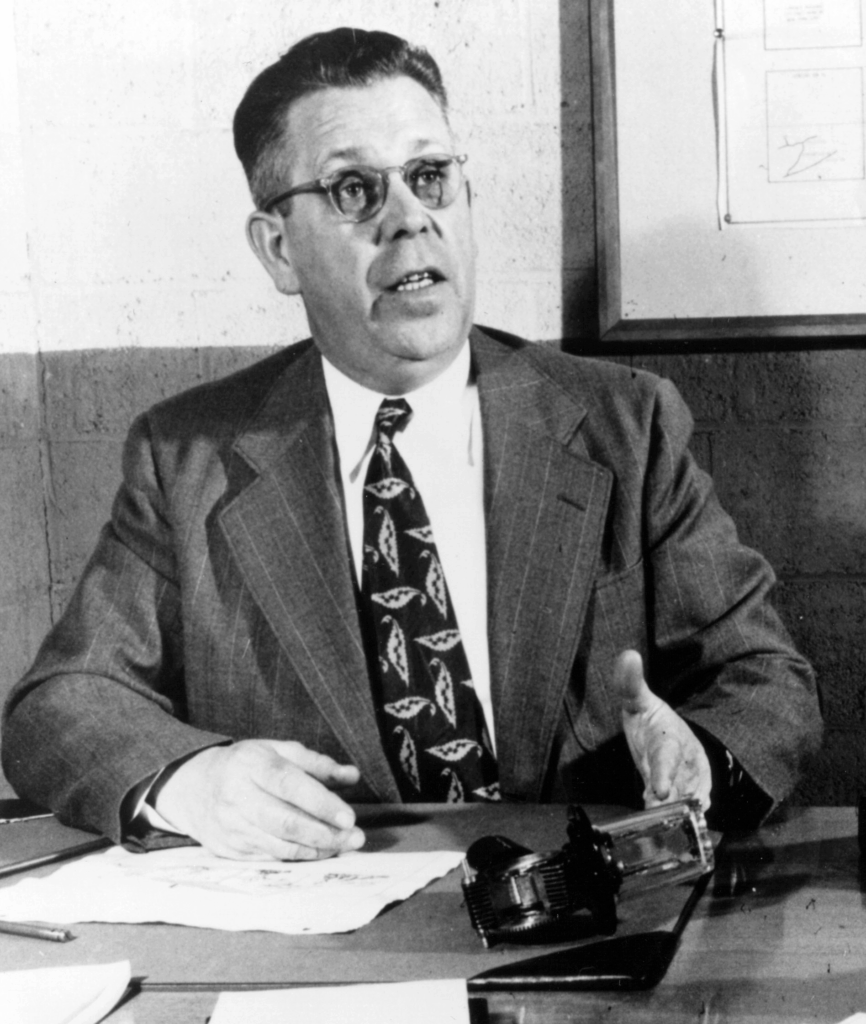
Percy Spencer’s life story exemplifies perseverance and self-education. Born in 1894 in rural Maine, he faced tremendous challenges early in life. He lost his father as a young child and became an orphan shortly afterward. At only 12 years old, he had to leave school to help support his family, ending his formal education.
Despite these obstacles, Spencer had an unstoppable desire to learn. He taught himself:
- Electricity principles
- Radio technology
- Advanced mathematics (trigonometry and calculus)
- Chemistry and physics
Often studying textbooks late into the night after exhausting workdays, Spencer’s self-education led him to a successful career in electronics. He eventually became Raytheon’s leading expert in radar tube design.
During World War II, Spencer’s engineering skills proved crucial to the Allied victory. He revolutionized the manufacturing process for magnetrons, dramatically increasing production to meet military demands. His contributions earned him the Distinguished Public Service Award from the U.S. Navy and helped change the course of history.
Spencer’s story shows how curiosity and determination can overcome limited formal education, a pattern seen in many self-taught inventors throughout history.
From Military Secret to Kitchen Essential: The Birth of the Radarange
Recognizing the huge potential of Spencer’s discovery, Raytheon quickly filed a patent application for a “microwave cooking oven” on October 8, 1945. By 1947, they introduced the first commercial microwave oven, appropriately named the “Radarange.”
However, this first version looked nothing like today’s compact appliances. The original Radarange was nothing like the compact kitchen appliances we see today.
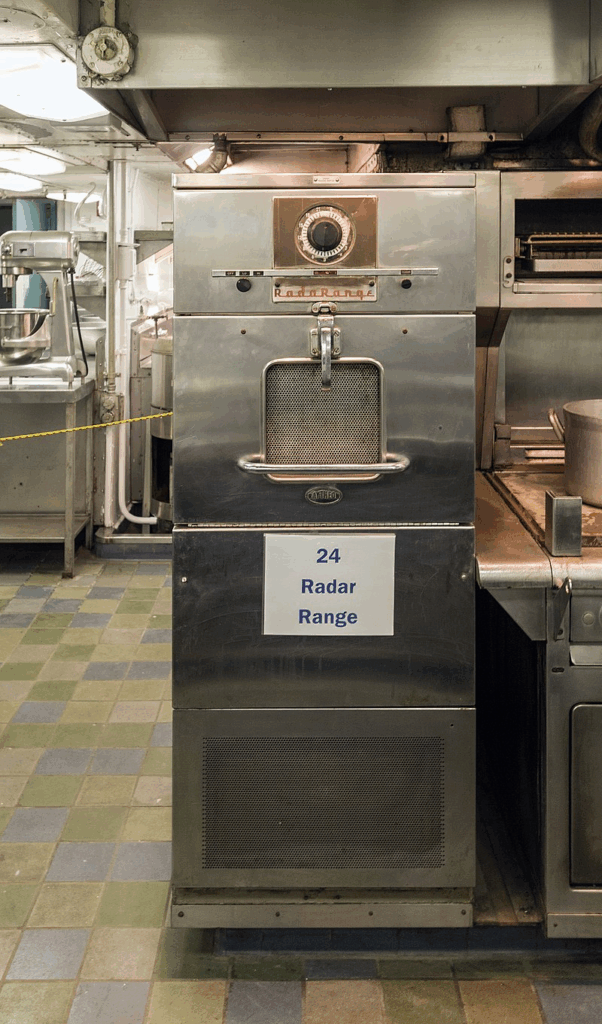
It was:
- 6 feet tall—towering over the average person
- Weighed 750 pounds—as heavy as a vending machine
- Cost approximately $5,000—equivalent to over $70,000 today
Because of its size, cost, and power, the first microwaves were used in restaurants, airlines, and ship kitchens, where rapid food preparation justified the investment.
Engineering Evolution: How the Microwave Became a Household Item
Percy Spencer’s accidental discovery of microwave heating was groundbreaking, but turning it into a practical appliance required vision, engineering, and innovation. Recognizing the enormous potential, Raytheon wasted no time—filing a patent for a “microwave cooking oven” on October 8, 1945.
Despite his groundbreaking invention, Spencer did not receive any royalties. Instead, Raytheon awarded him a one-time payment of $2.00, the standard token compensation the company provided to all its employed inventors for patented work at the time.
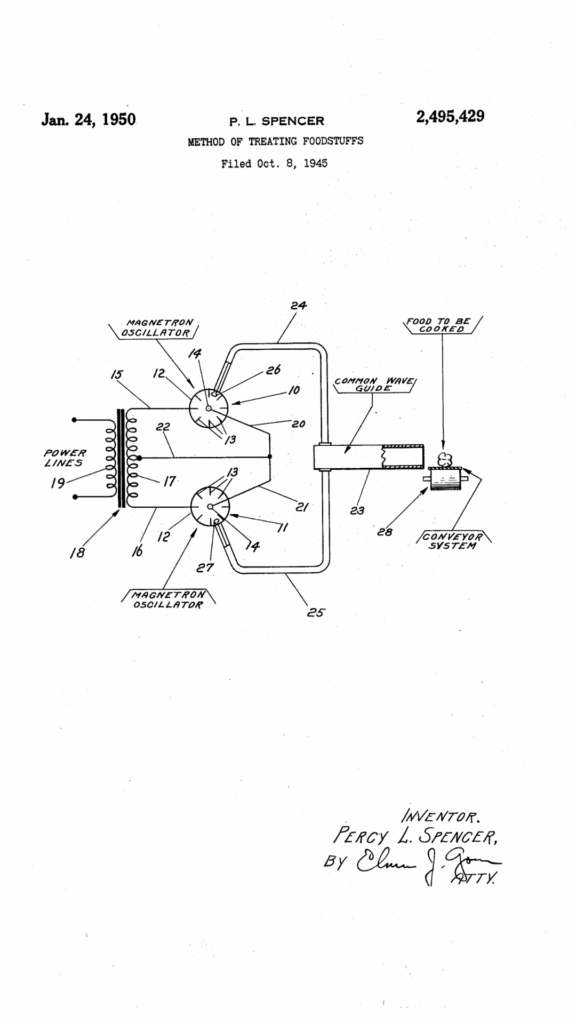
By 1947, the first commercial microwave oven was introduced: the Radarange. Unlike the sleek countertop models we know today, this early version was a massive industrial machine, designed primarily for commercial use.
Why Was It So Expensive?
The high price wasn’t just due to its novelty—it was a result of cutting-edge technology. The Radarange used water-cooled magnetrons, requiring complex engineering to function efficiently. Unlike today’s air-cooled models, these early microwaves needed plumbing connections to operate, making them impractical for home kitchens.
Despite these challenges, the Radarange proved its worth in commercial settings, demonstrating that microwave cooking could drastically reduce food preparation time.
The Turning Point: Making Microwaves for Homes

For nearly two decades, microwaves remained exclusive to commercial kitchens. But in 1967, everything changed. Raytheon’s subsidiary, Amana, introduced the first affordable countertop microwave, the Radarange RR-4.
Though still pricey at $495 (about $4,700 today), this model was small enough for home kitchens and marked the beginning of the microwave revolution.
Recognition for Spencer’s Contributions
Percy Spencer’s contributions to radar and microwave technology were widely recognized. In addition to receiving the Distinguished Public Service Award from the U.S. Navy, Raytheon honored him by naming a building after him.
The Science Behind the Speed: How Microwave Cooking Actually Works

Microwave ovens use electromagnetic radiation to heat food efficiently and safely. Operating at a frequency of 2.45 gigahertz, microwaves interact primarily with water molecules, as well as fats and sugars in food.
When microwaves penetrate food, they cause molecules to vibrate rapidly, generating heat through dielectric heating—a process that warms food from the inside out rather than heating the surrounding air like conventional ovens.
At the core of every microwave oven is the magnetron, a specialized vacuum tube originally developed for radar technology. The magnetron converts electrical energy into microwave radiation, which is then directed into the cooking chamber through a waveguide.
Microwave ovens are designed with safety features to prevent radiation leakage. The cooking chamber is enclosed in a metallic shield, and safety interlocks ensure the oven turns off whenever the door is opened.
One important rule: never put metal in a microwave. Metal reflects microwaves instead of absorbing them, which can cause sparking and damage to the appliance.
Most microwave-related injuries come not from radiation but from heat burns caused by overheated food or liquids. Understanding these principles helps us appreciate the engineering ingenuity behind this everyday kitchen appliance.
Today’s Technology: Modern Microwave Engineering Improvements
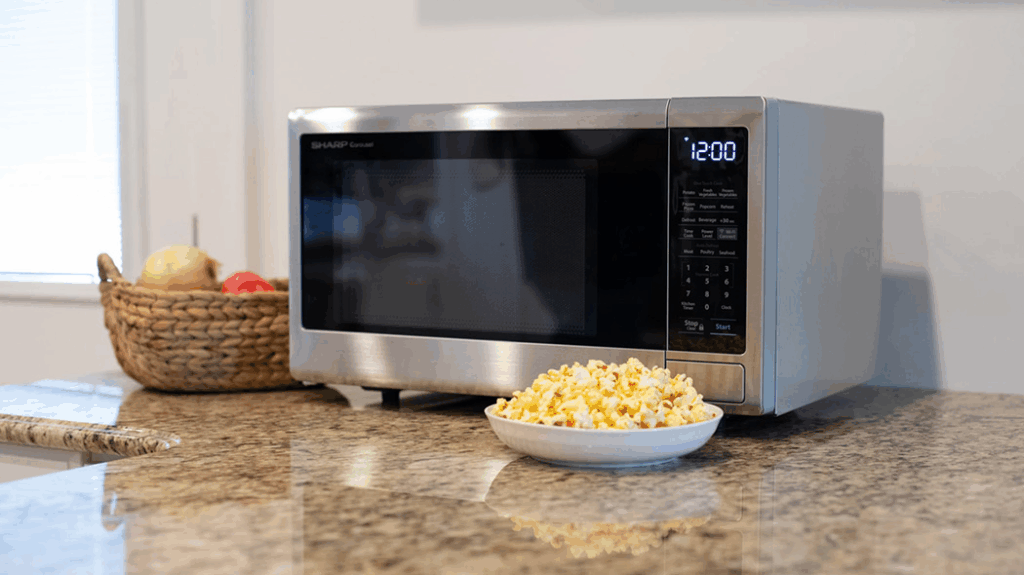
Modern microwave ovens showcase years of continuous engineering advances:
Turntables: This seemingly simple addition solved the problem of uneven heating by rotating food through the microwave field.
Sensor Cooking: Many newer models use humidity sensors to detect moisture levels and automatically adjust cooking time and power, preventing both overcooking and undercooking.
Inverter Technology: This innovation provides more precise power control. Traditional microwaves “pulse” full power on and off to simulate lower power, but inverter technology delivers truly variable power—especially important for delicate foods.
Combination Cooking: For greater versatility, some microwaves now combine traditional heating elements with microwave energy, allowing browning, crisping, and baking.
Smart Features: The latest models offer Wi-Fi connectivity for smartphone control and voice command compatibility with virtual assistants.
These ongoing improvements demonstrate how engineering continuously evolves to meet consumer needs.
Beyond Convenience: How Microwaves Changed Society

The microwave’s impact extends far beyond faster cooking times:
Changing Family Meals: The microwave’s efficiency perfectly matched the rise of dual-income households and busier lifestyles in the late 20th century.
Food Industry Transformation: Microwave technology fueled massive growth in the frozen food and ready meal industries, creating entirely new food categories and businesses.
Reducing Food Waste: By providing an easy way to reheat leftovers, microwaves have helped countless households waste less food.
Safety Innovations: Early public concerns about radiation safety drove the development of rigorous engineering standards that make microwaves among the safest kitchen appliances.
These wide-ranging effects show how engineering innovations can reshape daily habits and entire industries.
Fascinating Facts: Surprising Stories from Microwave History
The microwave’s development includes several interesting and sometimes amusing stories:
- Despite inventing this revolutionary device and holding 300 patents, Percy Spencer received only a $2 token payment from Raytheon for his microwave innovation.
- The first food deliberately cooked by microwave technology was popcorn—still a microwave favorite today.
- Early experimentation wasn’t without mishaps, as demonstrated by Spencer’s exploding egg incident.
- The public first encountered microwave cooking technology in January 1947 at a “Speedy Weeny” vending machine in New York’s Grand Central Terminal, which used microwaves to cook hot dogs.
- Early microwaves were sometimes called “electronic ovens” because the concept was so novel.
- Some scientists in the 1950s experimented with unusual applications for microwave technology, including attempting to revive frozen hamsters!
Conclusion: Engineering Creativity Changes Everyday Life
The microwave oven stands as a perfect example of accidental discovery transformed by engineering vision. What started as military radar technology became a kitchen essential, reshaping how we cook and eat.
Percy Spencer’s self-taught expertise, curiosity, and engineering refinement sparked a revolution that still impacts us today. The next time you heat leftovers or pop popcorn, take a moment to appreciate the remarkable innovation behind this everyday appliance.
What other inventions do you think started as military technology before becoming part of daily life? Let’s discuss it!
For more fascinating engineering stories, follow us on Instagram: @engineeringcommunity_
